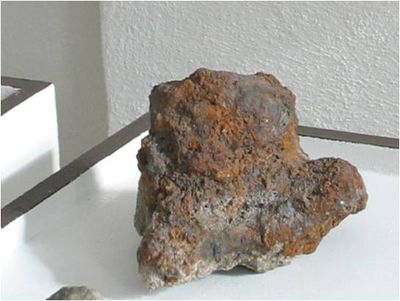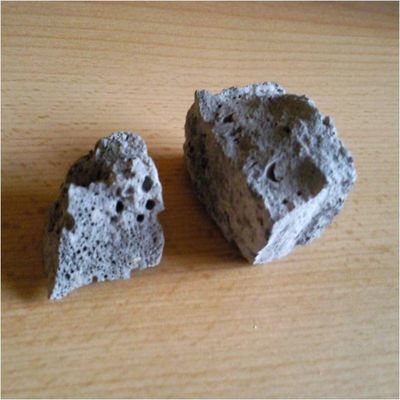Blast furnace slag
 Pig iron is an alloy with a carbon content greater than 2%. In addition, pig iron contains other elements, ie silicon, manganese, phosphorus, sulfur, tungsten, vanadium, etc.. Pig iron produced in blast furnace has to be further processed. According to another application pig iron is divided into: pig iron foundry, which are raw material for iron foundries, steel pig iron, which are starting materials for steel production, special pig iron. Slag is a valuable raw material for producing building materials. It is processed by crushing of gravel or granulated. Slag wool is produced by re-blowing molten slag with water vapor. It has good thermal insulation properties. Blast furnace gas - its composition is variable. Includes CO2, CO, H2, CH4, and the rest is nitrogen.
Pig iron is an alloy with a carbon content greater than 2%. In addition, pig iron contains other elements, ie silicon, manganese, phosphorus, sulfur, tungsten, vanadium, etc.. Pig iron produced in blast furnace has to be further processed. According to another application pig iron is divided into: pig iron foundry, which are raw material for iron foundries, steel pig iron, which are starting materials for steel production, special pig iron. Slag is a valuable raw material for producing building materials. It is processed by crushing of gravel or granulated. Slag wool is produced by re-blowing molten slag with water vapor. It has good thermal insulation properties. Blast furnace gas - its composition is variable. Includes CO2, CO, H2, CH4, and the rest is nitrogen.
The blast furnace is a device that is used to produce pig iron by ore reduction. In the blast furnace a large amount of raw materials processed at high temperatures, resulting in a liquid metal, slag and gases. The blast furnace is lined with refractory bricks of standard and has a steel casing. The sheath is welded from sheet steel of thickness from 20 to 35 mm. Workspace furnace consists of two truncated cones that are built larger to stand together and finished with top and bottom rolls.
 Vertical cross-section of working space profile is called a blast furnace profile. Tariff-sneezed, the upper oven, which is fed into the batch material, captures and removes the blast furnace gas. Batch materials are: ore, aggregates, fuel and waste. Conclusion of the furnace consists of a pair of bells, which lets the burden of blast in to the furnaces, while preventing the increase of blast furnace gas. Raw materials are usually transported to the furnace by tilting lift in tipping chains.
Vertical cross-section of working space profile is called a blast furnace profile. Tariff-sneezed, the upper oven, which is fed into the batch material, captures and removes the blast furnace gas. Batch materials are: ore, aggregates, fuel and waste. Conclusion of the furnace consists of a pair of bells, which lets the burden of blast in to the furnaces, while preventing the increase of blast furnace gas. Raw materials are usually transported to the furnace by tilting lift in tipping chains.
Blast furnace gas is discharged by two to four gas charges, which are symmetrically distributed upstream. Charge by its own weight falls to the bottom of the furnace, whence it proceeds against the stream of hot gases. Uniform a blast furnace profile operation is subject to a continuous fall in the batch melting and liquid products, as well as the gas flow velocity in different parts of the horizontal cross-section furnace. Continuous descent charge distorts the friction material on an uneven wall the furnace, and therefore the shaft extends downwards gradually. At the bottom of the shaft begins to melts ore to a plastic state. The blast furnace is located on an elevated base, which facilitates drainage of pig iron and slag. Outlet of pig iron is 200 to 500 mm from the bottom of the furnace to the bottom of the furnace was still a layer of pig iron, which protects the lining at the bottom. Liquid products are released at regular intervals. Into the blast furnace is blown from the Cowper air heaters preheated to about 10000 C, which reduces fuel consumption and increases the output of the furnace
Blast furnace slag is formed in the blast furnace from the ingredients (limestone) which was penetrated by the iron ore impurities, ie additives that degrade pig iron. Of slag, cement and water produce excellent slag bricks to build houses or fences



